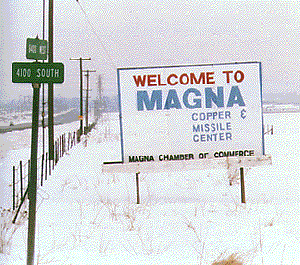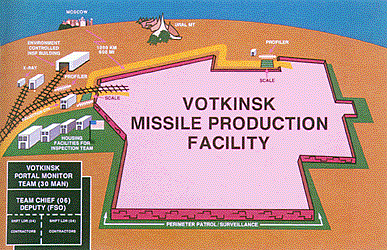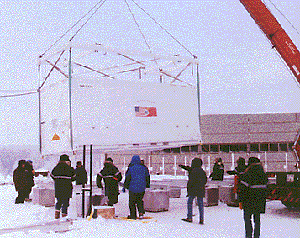| Soon after
the American delegation returned to Washington, Connell
and Englund departed again. Connell went to Geneva, where
he participated as a technical expert in the U.S.-USSR
ministerial negotiations between Secretary of State
George Shultz and Foreign Minister Eduard Shevardnadze.
From there, he proceeded to Vienna for the final session
of the technical talks. Englund traveled to Salt Lake
City to review the operational planning for hosting the
Soviet portal monitoring inspection team at Magna. At Magna, the OSIA detachment commander, Lt. Commander James L. Szatkowski, USN, worked with the Hercules Corporation to initiate construction of a two-mile-long, nine-foot-high, double-chain-link fence around the perimeter of the 185-acre former Pershing II rocket motor production area. This was the area that would be subject to portal monitoring on-site inspections. Within this fenced area, the Hercules Corporation operated an active, working rocket motor production plant. An average of 400 to 500 trucks and other vehicles entered and left the fenced area each week. Under the treaty, Soviet inspectors would have the right to monitor all vehicles exiting the Hercules facility, to inspect those vehicles transporting cargo larger than a certain dimension (Pershing II first-stage rocket motor), and to conduct patrols of the perimeter fence.12 Before the Soviet inspectors arrived at the site, other construction projects had been initiated. The United States built a single portal road exiting from the former Pershing II plant. According to the treaty, all vehicles that could contain an intermediate range ground-launched ballistic missile (GLBM), or the longest stage (Pershing II, first stage) of any such missile, had to leave the plant on this portal road. On one side of the road, within sight of the plant and the perimeter fence, the Soviet Union had the right to build up to three buildings, which would serve as a data collection center, inspection team headquarters, and warehouse. In fact, during the technical talks, the Soviet INF delegation had indicated its intention to have only a single building, a modular trailer flown from the Soviet Union, at its portal. This building would serve both as their data collection center and as site headquarters.13 |
|


